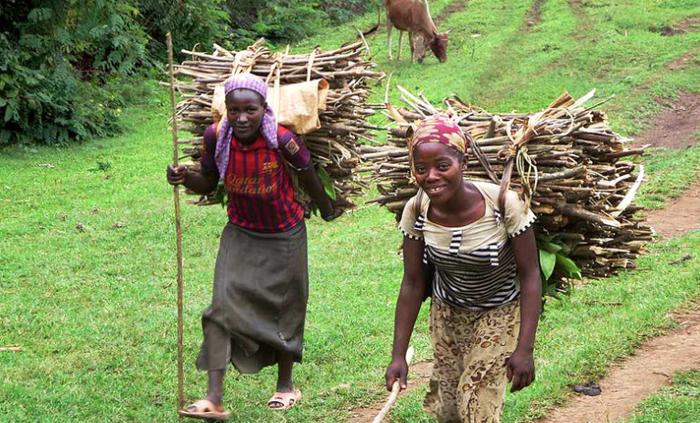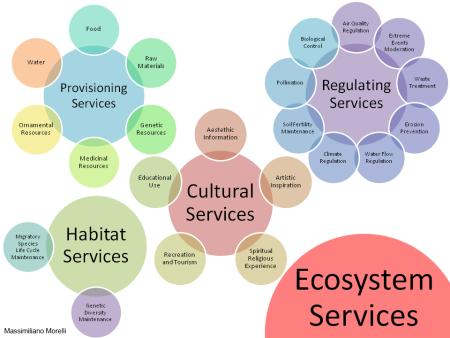

Massimiliano Morelli, an environmental and evolutionary biologist living in Bari, Italy sends us this dispatch.
In recent years there has been an effort to determine the economic value of nature by national governments and international committees. Although this utilitarian view applied to the complexity of nature could result in underestimating the value of biological resources, it is, at least, an attempt to make the discipline of economics acknowledge that nature has been providing humanity with what it needs since we first walked the planet. The goal is to make protecting biodiversity profitable.
Examples of direct use of resources and biological species are: harvesting and consuming plants for food or for traditional medicines and pharmaceutical purposes, consuming fish through fishing or aquaculture production, consuming fuel, in the forms of forest firewood, natural bio-gas, or fossil fuels, such as coal and petroleum. Another direct use would be biotechnologies that are re-modeling and increasing the value of genetic resources.

When policies preserve biodiversity, ecosystem services function better. Nevertheless, it can be difficult to think of a complex biome such as a tropical forest as a collection of ecosystems services for humans to use, rather than to see it as a priceless heritage. One way to estimate the value of a tropical forest is to calculate the cost to replace what ecosystems do if humans had to perform the services. When ecosystem services are estimated in this manner, such services provide approximately twice the world gross national product (Costanza et al., 1998). If we lose these natural ecosystem services, we are losing that much of the global economy.
Each time we harm ecosystems, we also harm our global economies. In addition, there are non-use values for nature and biodiversity. Mental health is maintained by a close relationship to nature. The cost to society of nature deficit disorder in children is now very high.
Natural landscapes, national parks, zoological and botanical gardens, and recreational activities (e.g. bird watching, diving, eco-tourism, hiking, fishing, photography, etc), keep people not only mentally healthy, but also physically fit, and represent a significant and growing income for businesses and governments.
In addition, religions benefit (for free) from biodiversity. For example, in India plants and animals such as peepal tree, lotus, cow, monkey, peacock and snake are still worshipped as sacred.
In 1992 the Convention on Biological Diversity recognized that biodiversity is a “common concern of humankind” and has economic value. Unfortunately, more than twenty years later, this value is still grossly underestimated.
Lead image by David Stanley creative commons 2.0 license.